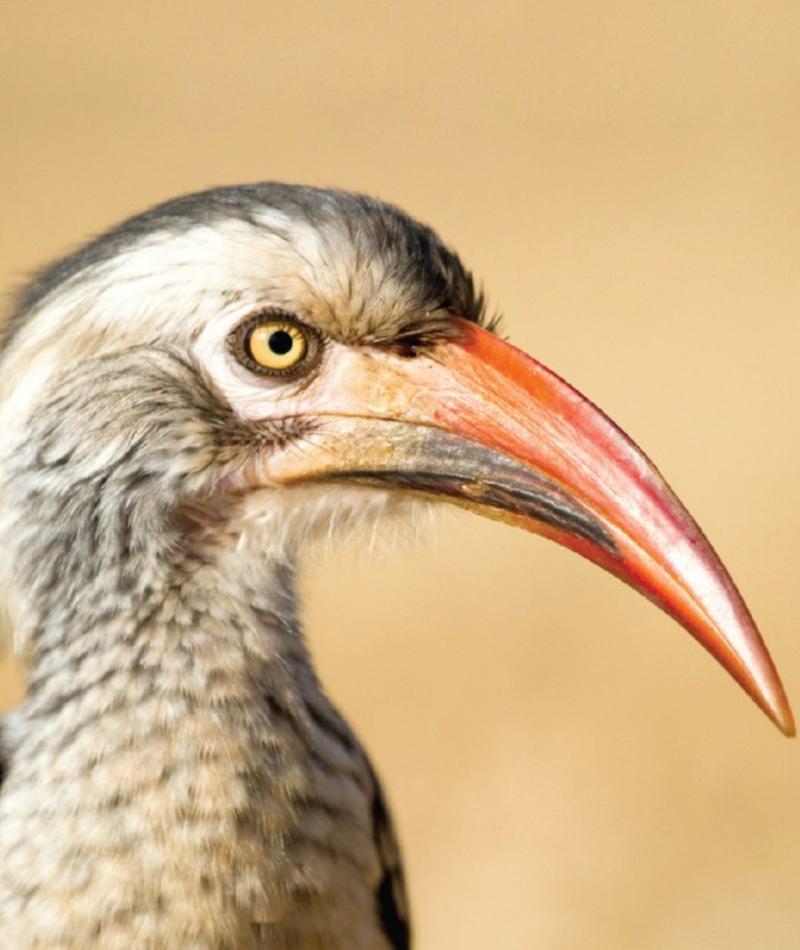
Red-billed Hornbill
Tockus erythrorhynchus
Did you know?
- This bird is an omnivore, meaning it eats plants and small animals.
- While the males and females look similar, the female’s bill is smaller.
- Its long, curved beak is perfect for digging.
- It is territorial but typically only defends its territory against its own species; other hornbill species aren’t a concern.
- A female typically lays three to six eggs at a time.
Teamwork
Red-billed hornbills hunt cooperatively with mongooses; the mongooses will sniff out and uncover insects, while the hornbills watch out for predators and sound alarm calls!
Trusting Pair
These birds have an interesting parental strategy. The female seals herself into a tree cavity, leaving only a small slit through which the male provides food. The female molts and regrows her feathers during this time, she breaks out when the oldest chick is 21 to 22 days old. The chicks then reseal the entrance alone, using their droppings and food remains.
Threat Level
- Unknown
- Common
- Near Threatened
- Threatened
- Endangered
- Critically Endangered
- Extinct in the Wild
Common
The Red-billed Hornbill is widespread and abundant.
Range
Sub-Saharan Africa
Habitat
Savannas, woodlands and thorn forests

We care about red-billed hornbills
The Saint Louis Zoo supports red-billed hornbills in the Bird House and Bird Garden.
Find this animal in Historic Hill

SAINT LOUIS ZOO ZONE
Historic Hill
Historic Hill is a lovely stroll through one of the oldest parts of the Saint Louis Zoo. From the 1904 World’s Fair Flight Cage to the Spanish architectural flavor of the 1920s in the Bird House, Primate House and Herpetarium to the finishing touches of our thoroughly modern exhibits, this area of the Zoo has a unique ambiance and a nostalgic history that make it a great destination.

